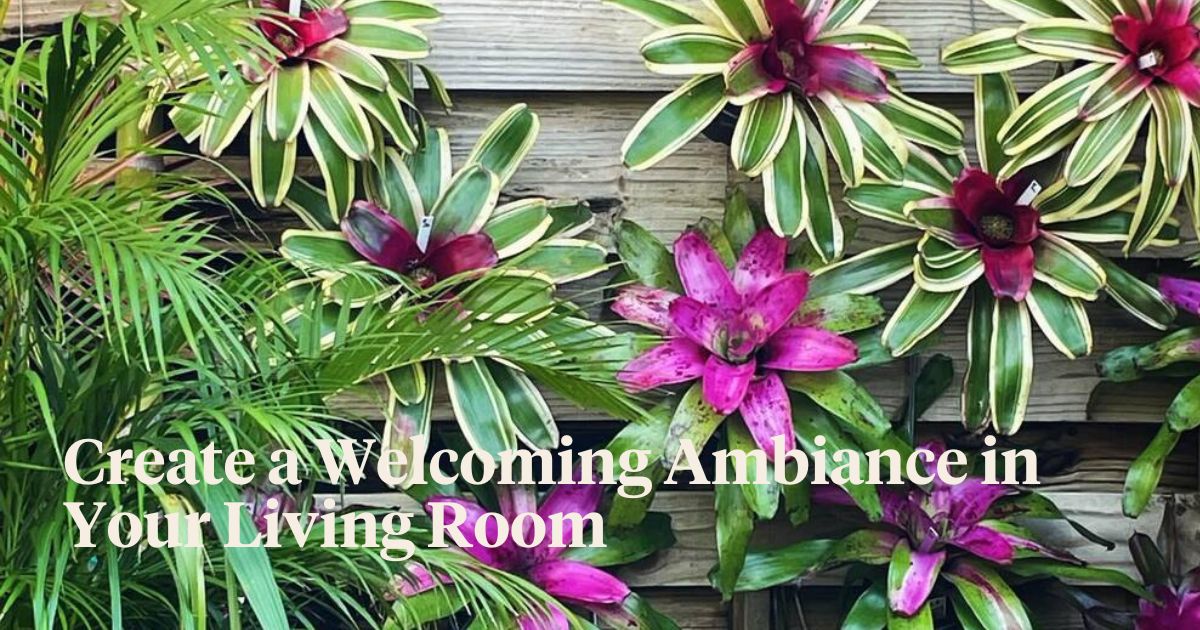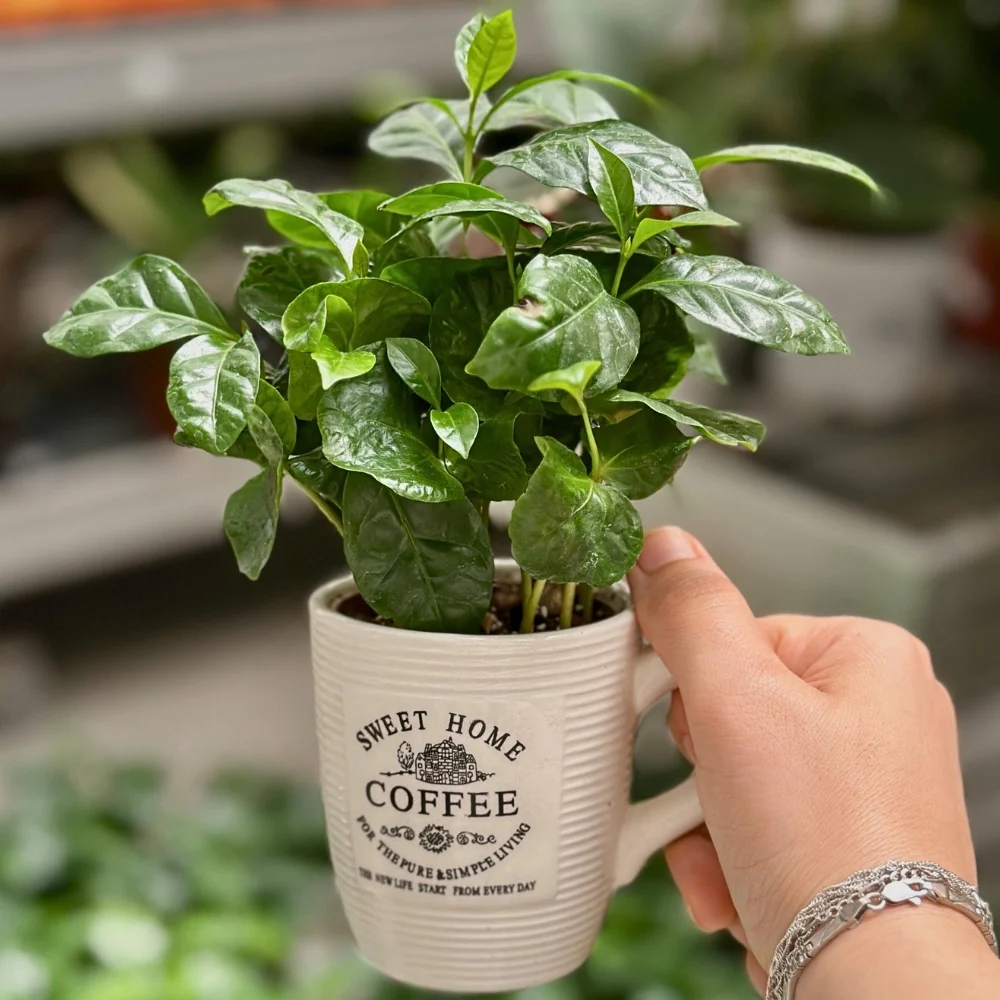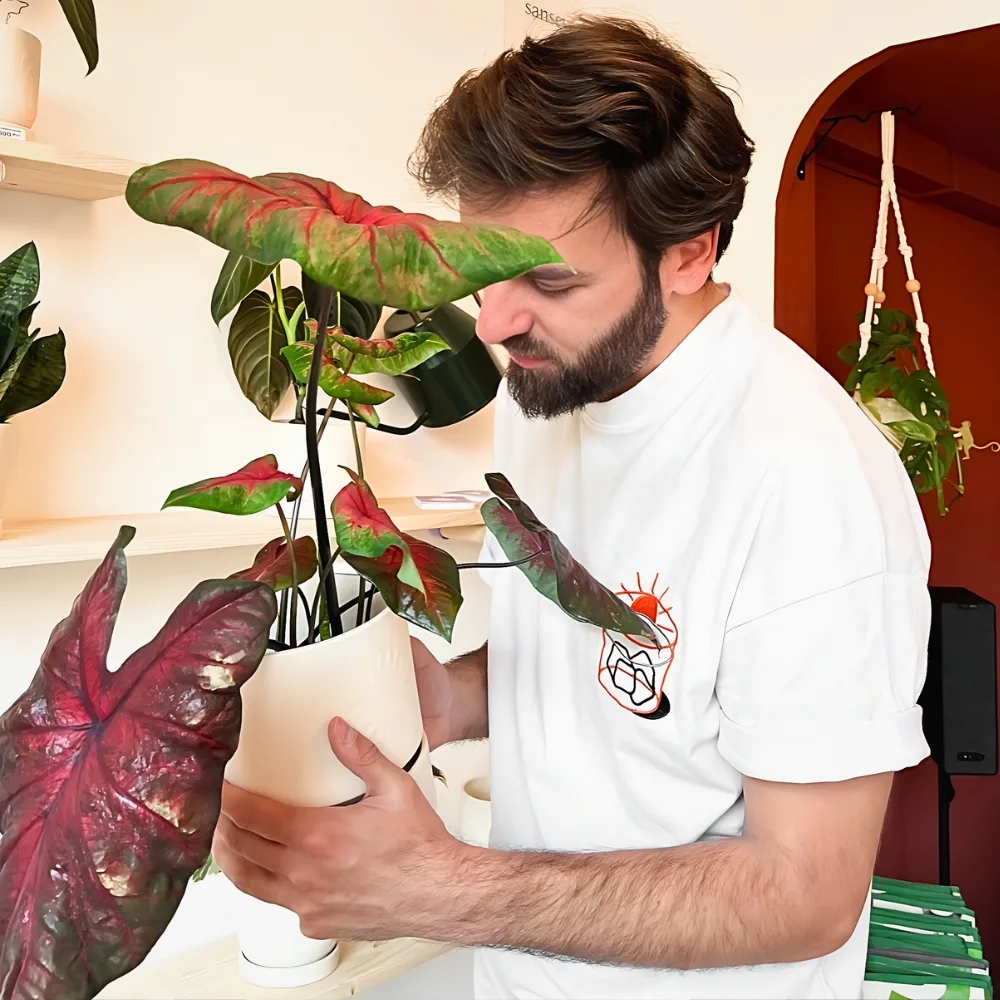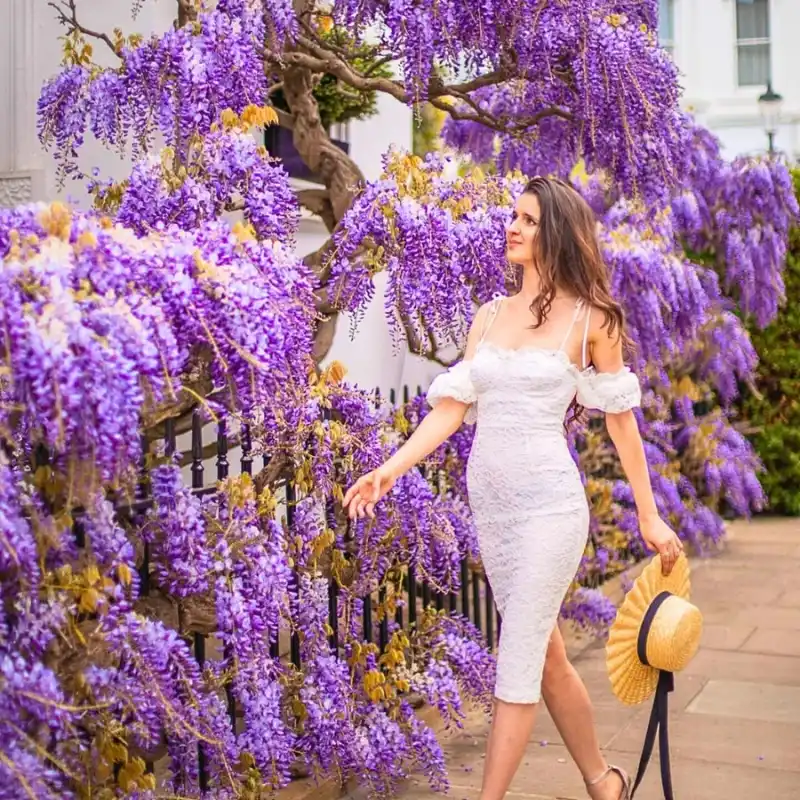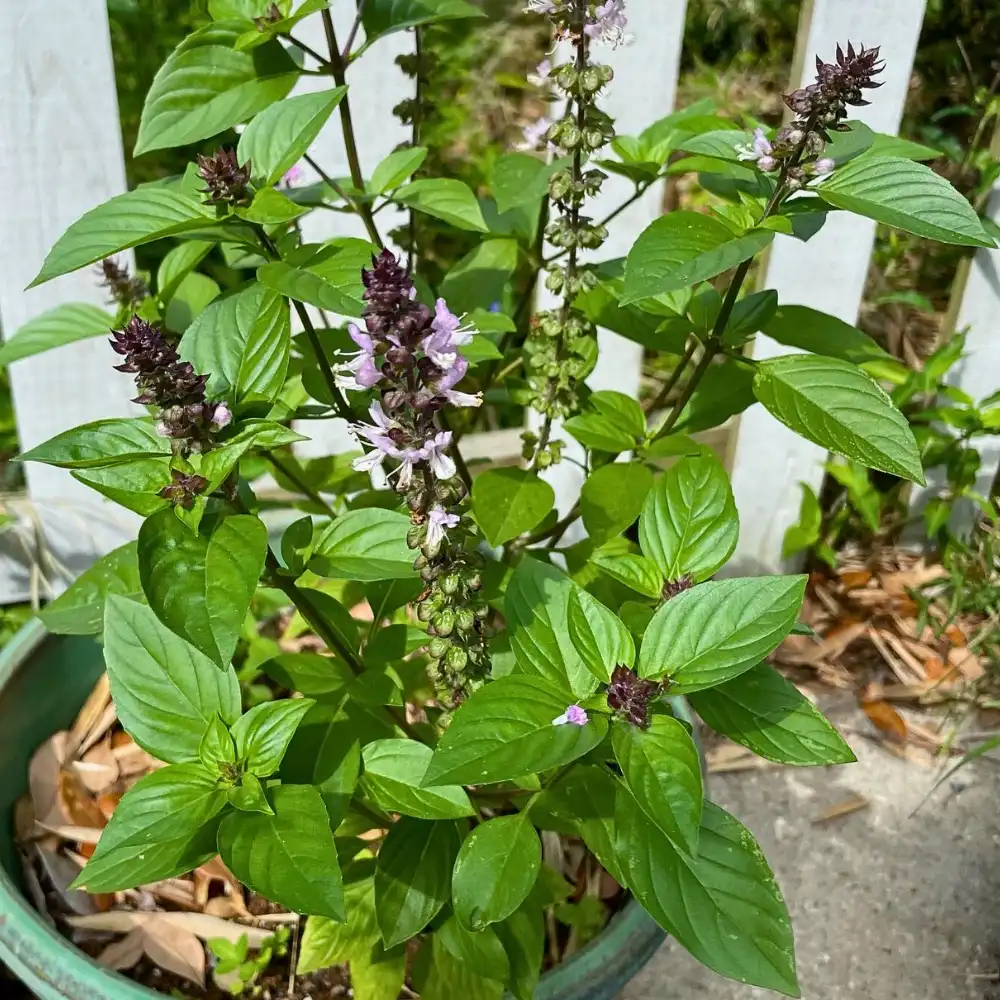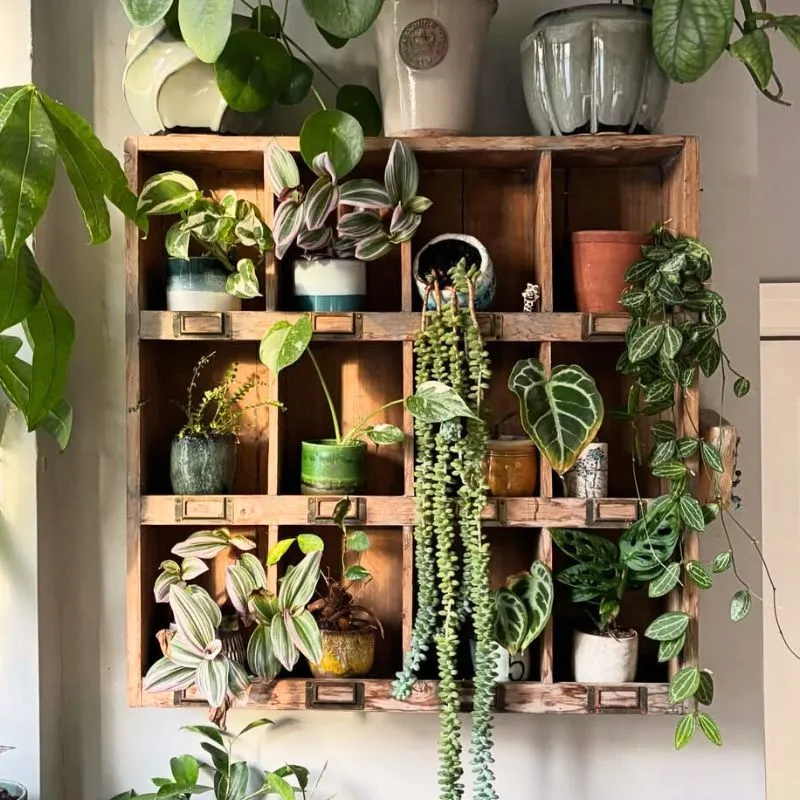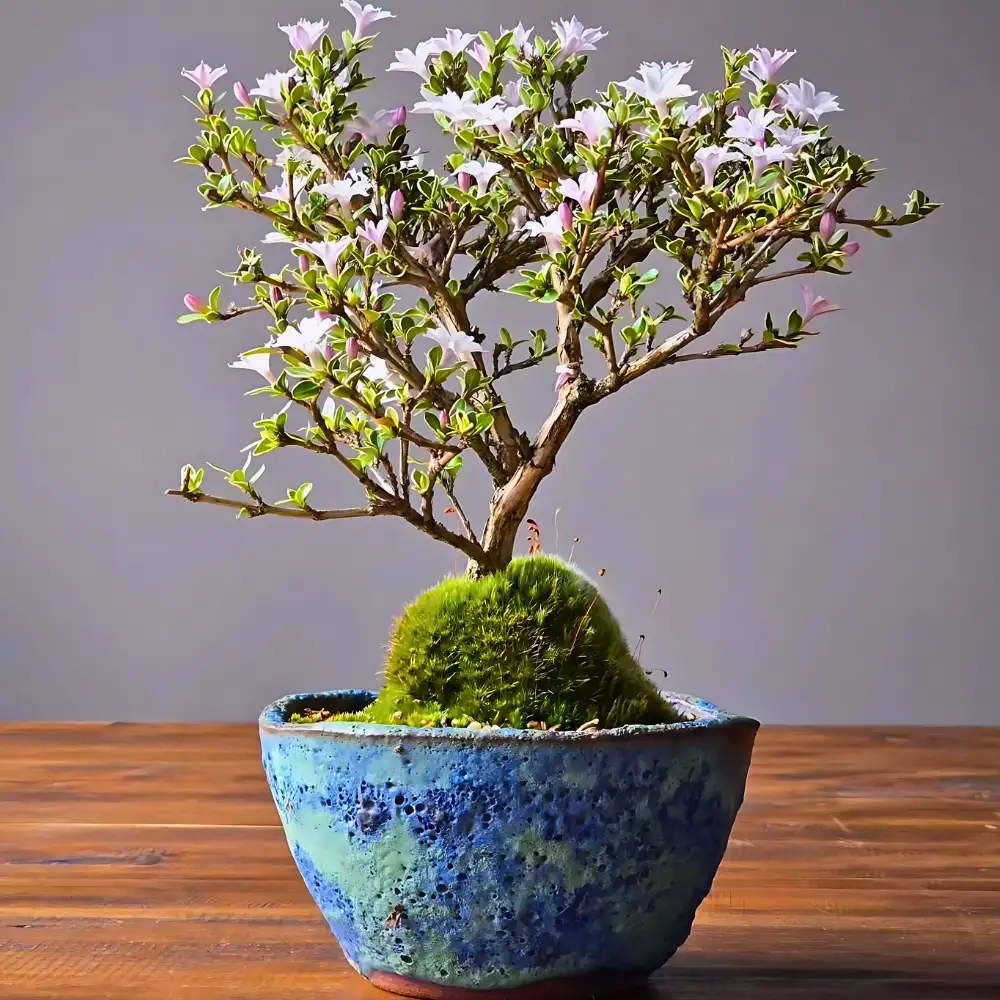Bromeliads are the crown jewels of the plant world and are often seen in modern interiors. They do well in homes, offices, and tropical gardens. And easy available, you can find them in almost any flower shop, and all garden centers.
Bromeliads turn some of the most mundane interiors into a tropical paradise with their unique structure, variegated foliage, splashing colors, and charm that's second to none. Whether you wish to create a welcoming ambiance in your living room, a productive atmosphere in your office, or an eye-catching display in your shop, bromeliads are an excellent choice.
These plants are known for their resilience, relatively low maintenance, and ease of care. This makes them a great companion for both experienced and novice gardeners. Let's take a closer look at this botanical wonder, learn about its various common types and distinctive characteristics, and understand bromeliad care and how to cultivate these plants successfully.

What Is a Bromeliad Plant?
Bromeliads (family Bromeliaceae) are a diverse group of over 3,000 species thriving in the tropical Americas. Named after Swedish botanist Olof Bromelius, these plants captivate with their striking foliage and colorful flowers. Bromeliads' leaves often form a rosette shape, and their dramatic inflorescence adds exotic elegance to any setting. They can be terrestrial species growing in soil or epiphytic, living on other plants without drawing nutrients from them.
Some, like Ananas comosus (pineapple), produce edible fruits, but most are prized for their ornamental value. With proper care, these adaptable plants can flourish indoors and outdoors, making them a favorite among gardeners.

What Are the Most Common Bromeliad Types?
The bromeliad family includes many popular species known for their unique features and ease of care. Here are some of the most celebrated types:
-
Pineapple Bromeliad (Ananas comosus): Famous for its edible fruit, this plant has spiky, architectural leaves that form a rosette. It adds a tropical flair to any space and is an excellent indoor plant. Did you know there is even an International Pineapple Day?
-
Guzmania Bromeliad (Guzmania spp.): Known for colorful bracts in reds, yellows, and oranges, Guzmania thrives in bright, indirect light and has glossy green leaves. It’s a perfect choice for house plants.
-
Aechmea Bromeliad: Zebra Bromeliad features silver-grey leaves and a striking pink or red inflorescence with blue flowers. It prefers indirect light and well-draining soil.
-
Vriesea (Vriesea splendens): Admired for flat, broad green leaves and sword-like flower spikes in bright colors, Vriesea prefers bright, indirect light and moist soil.
-
Neoregelia (Neoregelia spp.) is known for its colorful rosette leaves that change hue before blooming, displaying a spectrum of greens, reds, purples, and blues.
-
Tillandsia (Tillandsia spp.): Commonly known as air plants, they absorb water and nutrients through their green leaves. They need a bright light environment and regular misting, which is ideal for creative displays.
-
Billbergia (Billbergia spp.) is noted for its tubular shape and brightly colored, pendulous flowers in pink, purple, red, and blue.
-
Cryptanthus (Cryptanthus spp.): Also known as Earth Stars, they have low-growing, star-shaped rosettes and beautifully patterned leaves.
-
Tillandsia usneoides (Spanish Moss): This unique air plant drapes gracefully with silvery-green tendrils and thrives in humid environments with indirect but bright light exposure.

Differentiating Between Different Types of Bromeliad Varieties
Given the vast number of bromeliad species, identifying them can be challenging. However, certain characteristics can help distinguish between them.
-
Leaf Structure: Pineapple Bromeliads have spiky, dark green leaves arranged in rosette form, while Tillandsia bromeliads display thin, cascading foliage. Cryptanthus, or Earth Stars, feature geometric, star-shaped leaves.
-
Color Patterns: Leaf color patterns are key identifiers. Aechmea bromeliads sometimes display bold stripes, while Cryptanthus exhibit complex geometric patterns. Neoregelia’s foliage often changes color around the center when blooming, adding to their allure as house plants.
-
Flower Structure: Bromeliad inflorescences are diverse. Vriesea produces tall, colorful flower spikes, while Tillandsia usneoides (Spanish Moss) has delicate, cascading tendrils. Neoregelia bromeliads have smaller flowers, often overshadowed by their nice foliage.
-
Growth Habits and Environments: Bromeliads exhibit various growth habits. Cryptanthus are soil-dwelling terrestrial species, while Tillandsia are air plants. Spanish Moss grows draped from trees, while Billbergia grows upright.
-
Size and Growth Pattern: Bromeliads vary in size and growth patterns. Pineapple Bromeliads can grow large, while many Tillandsia species remain small, suitable for compact spaces. Neoregelia exhibits symmetrical growth, whereas Billbergia is more asymmetrical.
By recognizing these features, you can better understand and identify the different types of bromeliads, ensuring you select the perfect one for your needs and preferences. Remember to use distilled or tap water to keep their cups filled, promoting colorful new growth and healthy development. As you grow bromeliads, you'll find them rewarding and visually stunning additions to your plant collection.
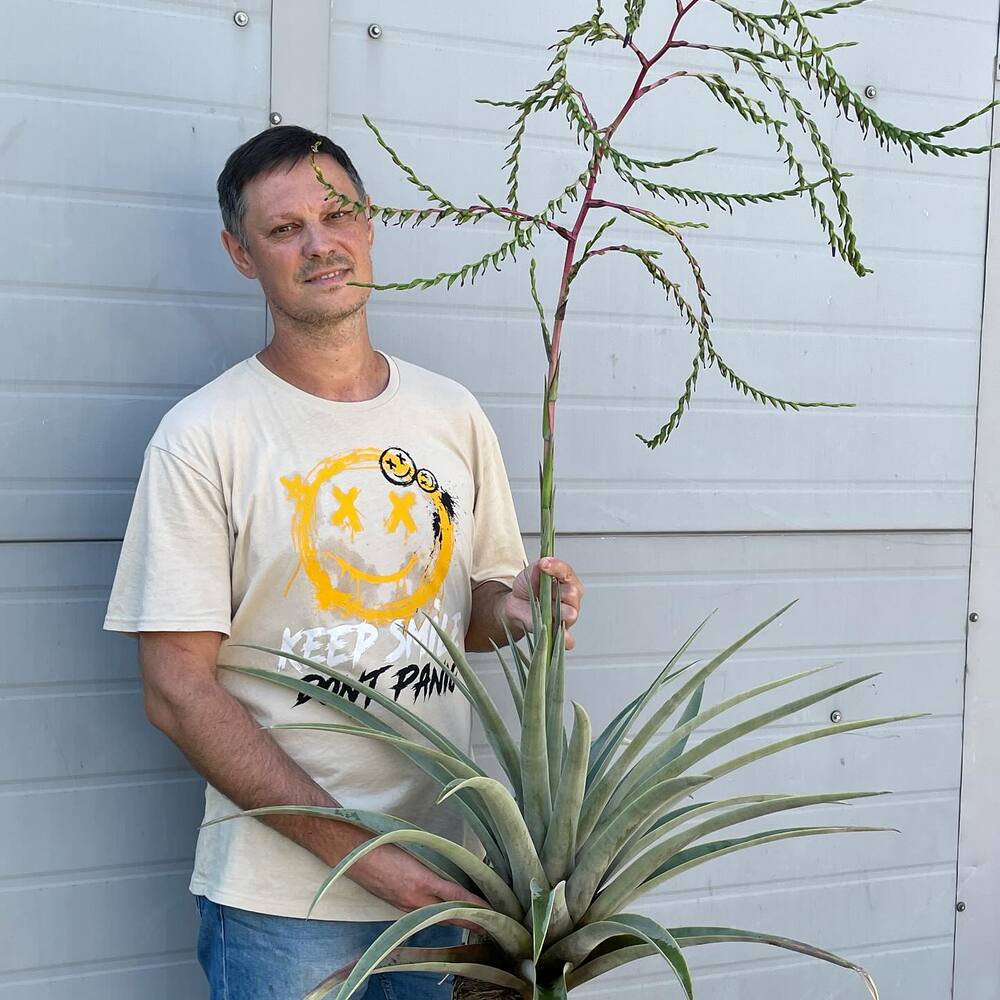
Growing and Caring For a Bromeliad Mother Plant
Growing and caring for a bromeliad plant is gratifying. Understanding the specific needs of your bromeliad mother plant is crucial for fostering healthy growth and ensuring a thriving plant that can produce new plants or pups. Let's dive into the essentials of growing and nurturing these fascinating plants.

STEP-I: Choosing Your Bromeliad Flowering Plants
The first step in growing bromeliads is selecting the right variety. With over 3,000 species, it is important to pick one that suits your environment and personal preferences.
-
Climate: Bromeliads are tropical plants that prefer warm, humid conditions. Opt for species like Neoregelia carolinae in cooler climates, which adapts well indoors with stunningly colorful foliage.
-
Environment and Space: Consider Guzmania or Neoregelia, which thrive in diffused light, as indoor plants. Aechmea and Billbergia are excellent tropical garden choices, handling bright light and varied temperatures.
-
Light Requirements: Many bromeliads prefer bright, indirect light. Vriesea and Tillandsia can tolerate more direct sunlight, but beware of too much light, which can scorch leaves. Neoregelia and Guzmania maintain their colors in lower light conditions.
-
Aesthetic Preferences: Choose Guzmania or Aechmea with pink flowers for colorful bracts. Neoregelia offers diverse patterns and colors, from dark green to deep purple and dark reds.

STEP-II: Preparing the Perfect Plot or Pot To Grow Bromeliads
Once you've selected your bromeliad, it's time to prepare the perfect environment for it to thrive.
-
Choosing the Right Container: Bromeliads dislike waterlogged conditions, so ensure your pot has adequate drainage holes. A shallow, wide pot is ideal for the root system. Use a potting mix specifically designed for bromeliads or orchids, which is airy and well-drained and often contains bark, sphagnum moss, and peat moss. Avoid heavy, compact soils that retain too much moisture and cause root rot.
-
Preparing the Planting Medium:
-
Orchid Mix: A combination of orchid bark, peat moss, and perlite provides excellent drainage and mimics natural conditions.
-
Bromeliad Mix: Commercial bromeliad mixes offer similar benefits, ensuring good drainage and aeration.
-
-
Soil Preparation for Ground Planting:
-
Location: Choose a spot with filtered sunlight, similar to a tropical canopy. Bromeliads grow best in temperatures between 60-80°F (15 and 27°C).
-
Soil Composition: To improve drainage, amend garden soil with organic matter. A loose, well-draining soil mix enriched with compost is ideal and sufficient for the plant to gather nutrients.
-

STEP-III: Planting Your Bromeliad
Planting your bromeliad correctly ensures it establishes well and begins its growth journey with a strong foundation.
-
Planting in Pots: Place the bromeliad to level the base with the potting soil. Planting too deep can cause rot, while too shallow planting can make the plant unstable. Water lightly settles the soil around the roots, and the central tank or cup is filled with distilled water to maintain humidity around the new plant.
-
Planting in the Ground: Choose a location with filtered sunlight and well-draining soil. Dig a hole wide enough for the root system and plant at the same depth as in the previous container to maintain stability. Backfill the hole, firm the soil gently, and water lightly to help it settle.
-
Special Considerations for Air Plants (Tillandsia): Air plants do not require soil. Mount them on wood or stone, securing with wire or glue designed for orchids. Ensure bright, indirect light and mist regularly with distilled water to keep them hydrated and thriving.

Growing Bromeliads Without Soil - Ideal for Air Plants
Air plants are part of the Bromeliaceae family and are native to the forests, mountains, and deserts of Central and South America. Unlike their terrestrial cousins, Tillandsia species have adapted to absorb water and nutrients through their leaves, thanks to specialized cells called trichomes. This adaptation allows them to thrive in environments without traditional soil-based growth.
Ideal for those who appreciate a touch of botanical whimsy, air plants can be mounted on various surfaces, offering endless decorative possibilities as house plants. Here’s how to cultivate these unique plants successfully.STEP-IV: Crafting the Ideal Environment to Grow Bromeliads

To grow bromeliads, recreate their tropical habitat by focusing on temperature, humidity, and light conditions.
Bromeliads prefer temperatures between 15-27°C but can tolerate brief drops to 4°C. High humidity (50-70%) is crucial, especially in dry climates; use a humidifier or place bromeliads in humid areas like bathrooms. Bromeliads need bright, indirect light.
Avoid direct sun, which can scorch leaves, and too little light, which dulls colors. Place near east or west-facing windows for ample sunlight. Ensure the whole plant gets good air circulation to prevent fungal diseases; consider using a small fan indoors.
Water bromeliads by keeping the central cup filled with distilled water or rainwater, emptying and refilling regularly. For soil-grown bromeliads, water lightly, keeping the soil moist but not waterlogged.

Care for Bromeliad Parent Plant Begins
Caring for a bromeliad parent plant involves understanding its unique needs and providing the right conditions for growth. The parent plant is the original plant that produces offsets or "pups." It requires careful attention to ensure it remains healthy. Here’s how to care for your bromeliad parent plant effectively.

Balancing the Watering Practice
Watering bromeliads requires a nuanced approach to avoid root rot and dehydration. Fill the central cup of tank bromeliads like Guzmania and Neoregelia with distilled water or rainwater, avoiding tap water due to harmful minerals. Periodically flush the cup to remove debris.
For terrestrial species like Ananas comosus (Pineapple Bromeliad), a well-draining potting mix is needed to maintain soil moisture without waterlogging. Air plants (Tillandsia spp.) need regular misting or soaking in water for 20-30 minutes weekly, ensuring they dry completely afterward.
Adjust watering based on environmental conditions; reduce frequency in humid areas and increase in dry climates. Watch for signs of overwatering, such as soft, brown color patterns over the green leaves, and underwatering, like dry, curled leaves, and adjust accordingly.

STEP-VI: Understanding Bromeliads' Light Requirements
Light is crucial for bromeliads, impacting their growth, color, and health. Most bromeliads, like Guzmania and Neoregelia, thrive in bright, indirect light. Indoors, place them near east-facing windows for bright morning light without harsh afternoon rays.
Avoid direct sun, which can scorch leaves. Outdoors, species like Aechmea and Billbergia, can tolerate more sunlight, while Guzmania and Vriesea prefer partial shade with dappled light, similar to their natural habitat under tropical canopies.
Gradually acclimate bromeliads to new light conditions to prevent shock, moving them incrementally over a few weeks. Monitor for light stress: Pale, leggy leaves indicate too little light, while brown, scorched spots suggest too much direct sun. Adjust their location to maintain the colorful appearance.

STEP-VII: Choosing the Best Soil for Bromeliads - Airy and Well Drained
Bromeliads thrive in well-draining, airy soil that mimics their natural epiphytic conditions. The ideal soil mix includes orchid bark, sphagnum moss, perlite, and bark chips, providing excellent drainage while retaining some moisture.
Ensure pots have drainage holes to prevent water accumulation, which can cause root rot. Position the bromeliad base level with the soil surface to avoid central rosette rot. For an authentic, growing experience, mount bromeliads on cork bark or tree branches using sphagnum moss, securing with a fishing line or non-copper wire.
Refresh the potting mix annually to maintain its effectiveness. Regularly check soil moisture and adjust watering practices to ensure the right balance, creating an environment for bromeliads to showcase their lush foliage and amazing colorful flowers.
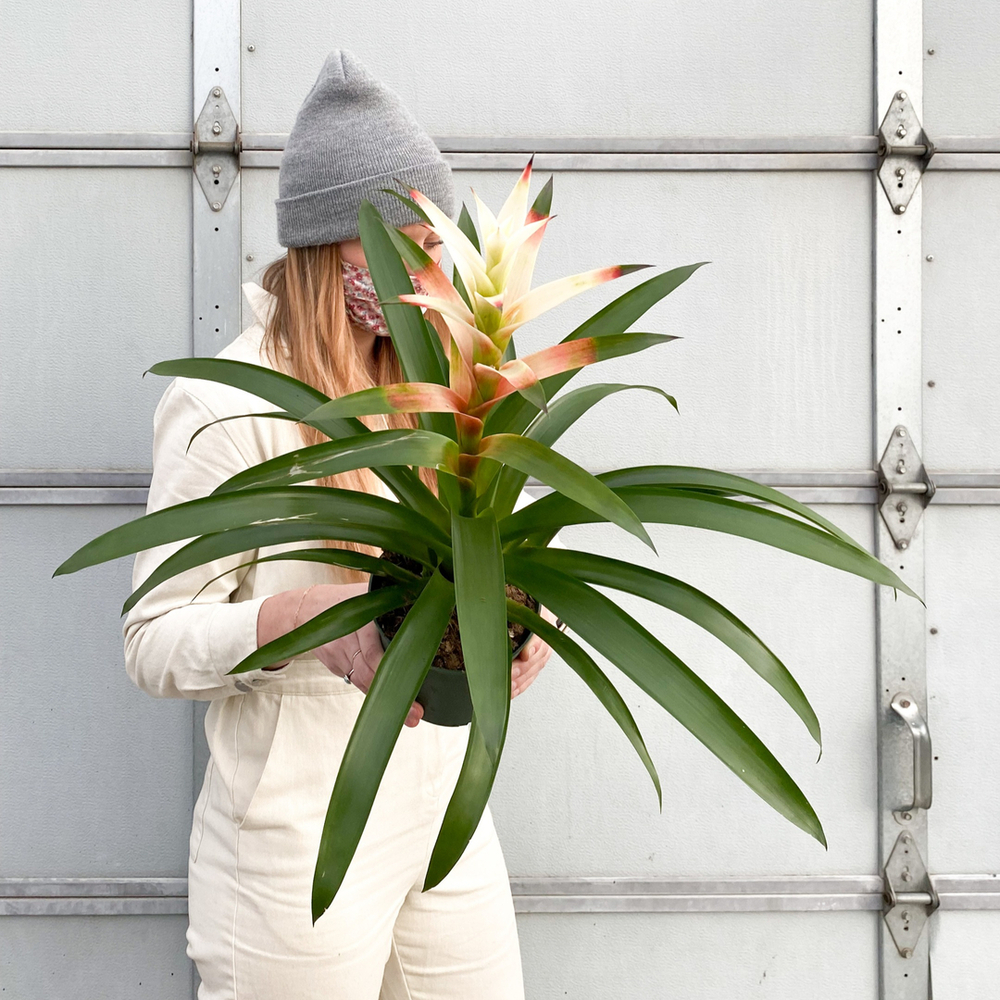
STEP-VIII: Feeding Bromeliads - Balancing Nutrients for Healthy Parent Plants
Feeding bromeliads supports their growth and colors. Use a balanced, water-soluble fertilizer specifically for bromeliads or orchids. Dilute the fertilizer to half strength so that the plants fertilize lightly, applying it directly to the central cup of tank bromeliads or around the base for terrestrial species. Avoid getting fertilizer on leaves to prevent burning.
Feed bromeliads every two to three months during the growing season (early spring to late summer), reducing or stopping during fall and winter when nutrient needs decrease. Watch for signs of overfeeding, like leaf tip burn or salt buildup on the soil surface, and flush with distilled water if necessary. Consider organic alternatives like fish emulsion or compost tea for a gentle, slow-release nutrient source beneficial for outdoor bromeliads.

Ideas to Incorporate Bromeliads in Your Indoor Settings
Bromeliads are versatile and perfect for enhancing indoor spaces. Create living walls by mounting various bromeliads, such as Tillandsia, Neoregelia, and Guzmania, on vertical surfaces, ensuring bright, indirect light and regular misting.
Use smaller species like Cryptanthus in terrariums with moss, ferns, and stones placed in bright, indirect light. Hang air plants in glass orbs or on driftwood near windows for a floating garden effect. Use colorful bromeliads like Guzmania or Aechmea as table centerpieces in decorative pots.
Transform bathrooms into tropical retreats with bromeliads around sinks, bathtubs, or showers, thriving in high humidity and bright, indirect light.
Compact species like Cryptanthus or small Neoregelia varieties add greenery to bookshelves. In decorative pots, species like Aechmea and Billbergia brighten window sills, creating dynamic displays in filtered sunlight.

Embracing the Beauty and Simplicity of Growing Bromeliads
Bromeliads are truly the crowning jewels of the plant world. They bring a touch of the tropics into our homes and gardens with their amazing colors, unique structures, and relatively low-maintenance nature. These plants, whether used as stunning indoor displays or as part of a lush outdoor garden, offer a delightful combination of aesthetic beauty and horticultural simplicity.
Understanding the diverse types of bromeliad, from the well-known Pineapple Bromeliad to the ethereal Tillandsia, helps select the right species for your environment. With proper care, including the right lighting, soil, and watering practices, bromeliads can thrive and bring tropical elegance to any space.
As you embrace the journey of growing and caring for bromeliads, remember that these resilient plants are as forgiving as they are stunning. With a little attention to their specific needs, your bromeliads will flourish, adding a vibrant and exotic touch to your botanical collection.
Most bromeliads grow slowly and produce flowers once they turn into a mature plant. The amazing colors of their flowers and bracts make them a popular choice among plant enthusiasts. Regular care, including adequate light and watering, ensures your bromeliad will display its best colors.

